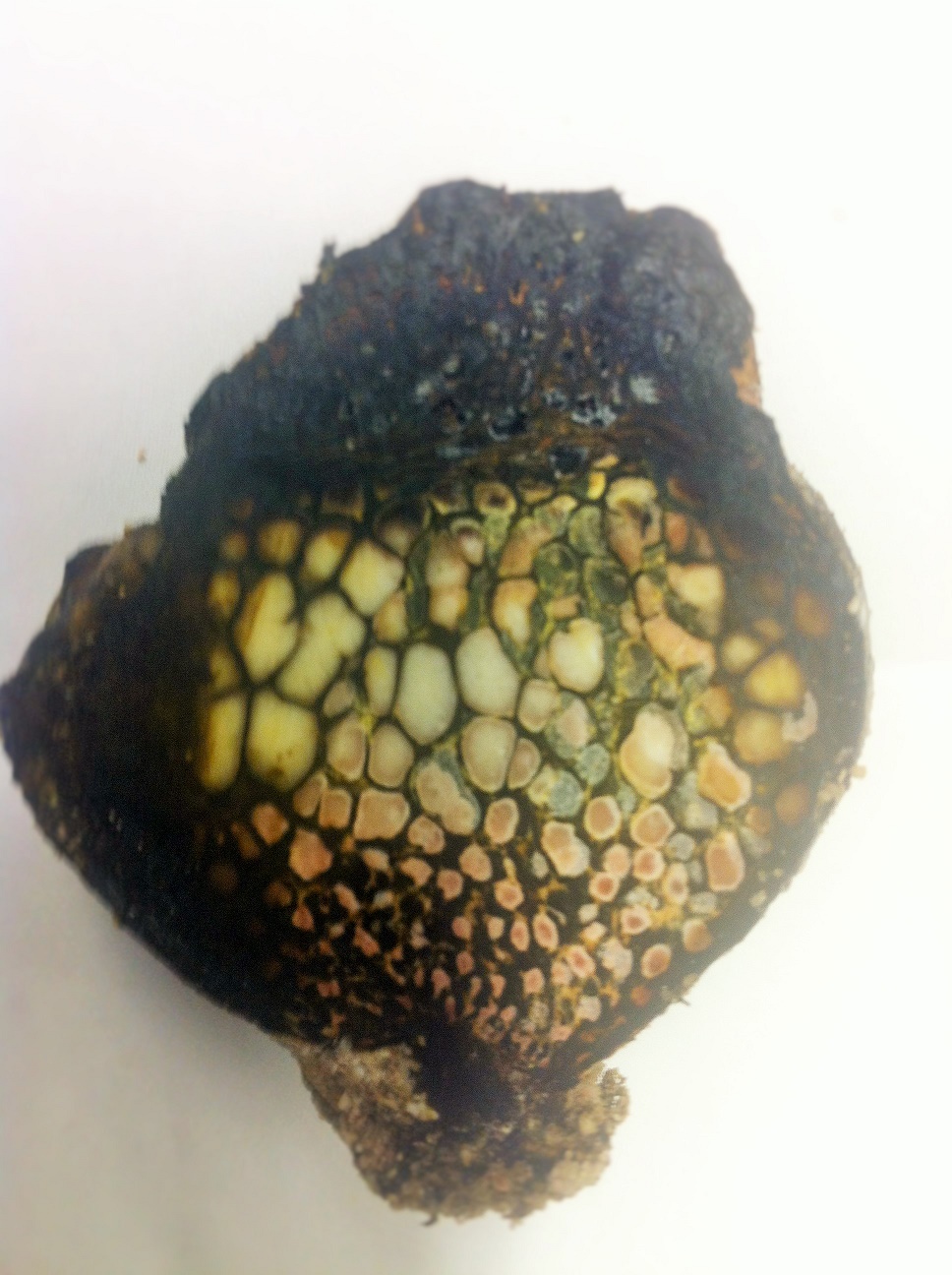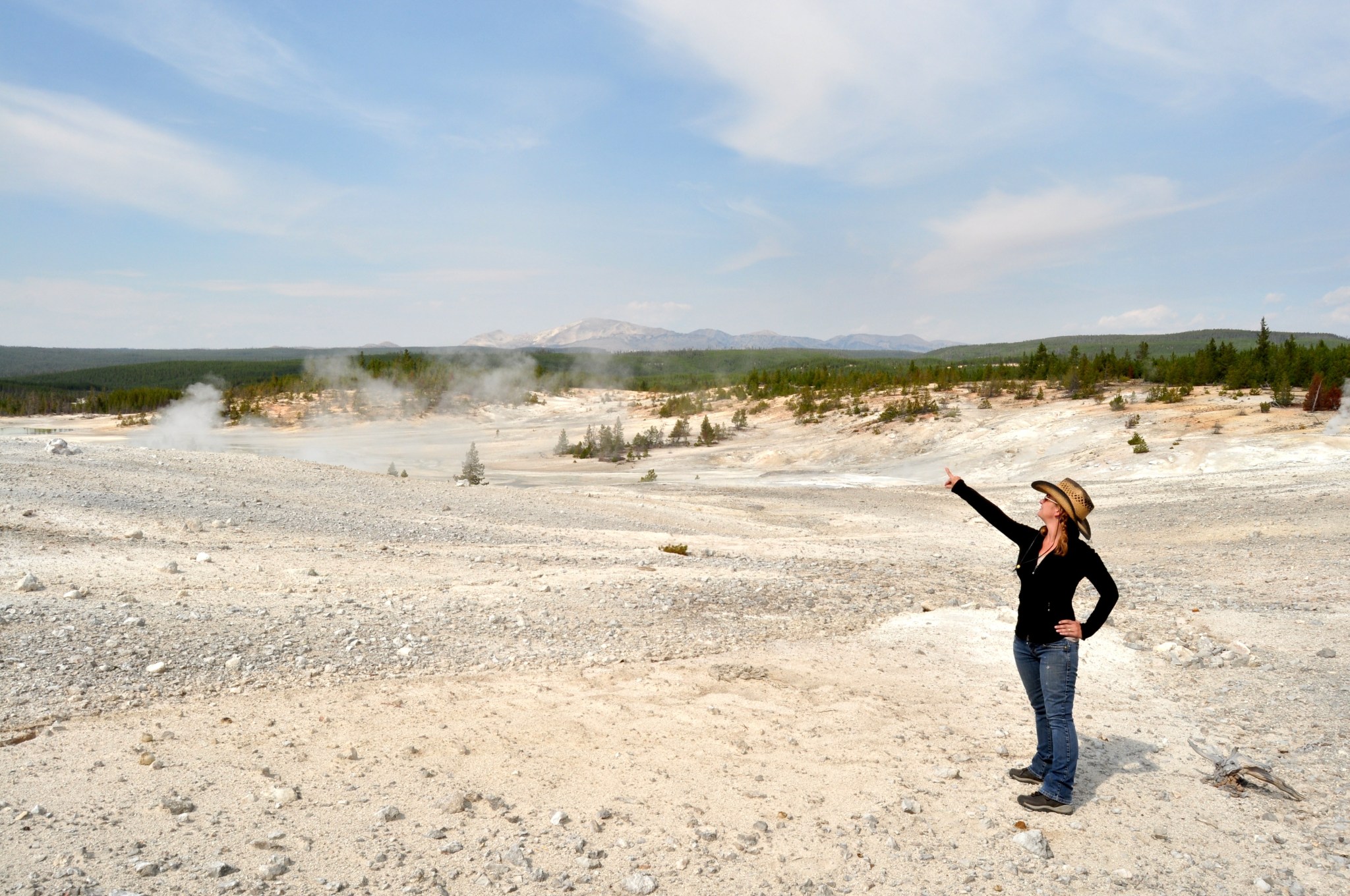Fungi often live in tandem with trees, bacteria and more, in environments that range from lush forests to dry deserts. But in an environment too harsh for most organisms to live, NASA has found a fungus that contains an entire ecosystem – and inside, two new categories of microbial life.
Norris Geyser Basin in Yellowstone National Park – home to the tallest acid geysers in the world, with soils riddled with sulfur and toxins – is an almost unlivable environment. This harsh landscape was where NASA scientist Kenneth Cullings found himself while pondering why scientists hadn’t yet found any organism alive today whose genetics could be traced back to life’s origins. During that very thought, he kicked over a bulb-shaped fungus, no larger than the size of his fist, its contents spilling out across the floor.
In this harsh environment, there was life. After further study, what Cullings and his team at NASA’s Ames Research Center in California’s Silicon Valley found inside this fungus was surprising: an island of biodiversity in a desert. These results were published today in the scientific journal Microbiology Open.
“What we found inside this fungus has expanded the tree of life, and has implications for life’s ability to survive on other worlds,” said Cullings, the lead author of the paper. “It could even show us how microbiology can help us deal with toxic materials here on Earth and clean up our own messes.”
Known by nicknames like “dead man’s toe” and “dyemaker’s puffball,” Pisolithus arhizus is commonly found in the lush underbrush of forests. But even in a place where no trees and barely any microbes can survive, its microscopic world within contains multitudes.
Inside, P. arhizus holds metals and bacteria, sulfur and algae, hydrocarbons and microorganisms – all interacting in a self-contained system. Its environments are diverse too, with some sections containing no oxygen at all, and others up to four times the oxygen of Earth’s atmosphere. Here, in this oasis of life, scientists have discovered two new microbial phyla.
New Branches on the Tree of Life
Phyla are the second highest order of classification in what’s known as the “tree of life” – the network of classifications that make up all known living things. Bacteria is one of three “trunks” that make up that tree, and phyla are the branches that come off that trunk. The bacteria found inside P. arhizus just added two more, expanding the domain of bacterial life from 30 to 32 known phyla.
In recent years, new advances in molecular and genetic analysis have enabled discoveries like this one that weren’t possible before. These two phyla, so new they don’t yet have names, can give us new insight into the microbial world.
“Life on early Earth wouldn’t use oxygen; to find such life today, you’d need to look in a place totally cut off from our present world,” said Cullings. “Life on other worlds, if it’s out there, might not use oxygen either. When I split P. arhizus open that day, it hit me – this fungus is one of the very few places where we can study life in such conditions. The answer was hiding in plain sight.”
A Potential Lifeboat for Life at the Extremes
Symbiosis between fungi and microbes is well known to enable life to survive in extreme environments. Lichens, for example, are formed from a symbiosis between a fungus and usually algae, and have survived trips to space as well as simulated Martian conditions. Because of this, studying symbioses is important to astrobiology – the study of life in the universe.
We’ve never found any signs of life other than our own Earth life, but many scientists posit that ancient Mars could have harbored life – and astrobiologists are continuously on the search for how to uncover it. But what could have happened to that life as Mars transitioned from a potentially livable place to what it is now? P. arhizus could provide an answer.
“If there once was life on Mars – and that’s a big ‘if’ – something like P. arhizus may have evolved as well,” said Cullings. “And when the environment of Mars deteriorated, that organism could have given shelter to Mars-equivalents of Earth microbes – much the way P. arhizus does in this thermal soil desert – allowing it to survive even as the planet became uninhabitable. But, that’s a long-shot; Mars may not have been habitable long enough for that kind of complex life to evolve.”
The timescales of planetary evolution span billions of years. Planets with a potential for habitability, like Mars or others beyond our solar system, may have had life come and go long before we get the chance to study them. Understanding how something like P. arhizus could preserve life at the extremes and through periods of extreme change helps scientists know what to look for as we seek signs of life on other worlds.
Cleaning Up with Microbiology
The question of where P. arhizus and the microbial life inside it gets its energy is a mystery, but the research team has some ideas.
One theory is that the microbes inside are able to consume the toxic junk, such as arsenic, inside the fungus and convert it into energy. Cullings’ team has looked at several new microbes from inside the fungus, using a process known as genomic sequencing to determine not only what this new life is, but what it can do.
Preliminary results from this genetic sequencing indicate that the microbes contain not only the genes to create energy from the hydrocarbons present, but also to clean up a wide range of toxins, including gasoline, oil, diesel and more – all contaminants that damage soil and groundwater around the globe. As such, these microbes could be a key to purifying wastewater and cleansing toxic materials from natural environments while producing energy at the same time.
Discovering this thriving self-sustaining ecosystem in such a harsh environment gives scientists new ideas for how to live sustainably here on Earth, how life here began and where else in the universe it may thrive.
For news media:
Members of the news media interested in covering this topic should reach out to the NASA Ames newsroom.
Author: Frank Tavares, NASA’s Ames Research Center





























